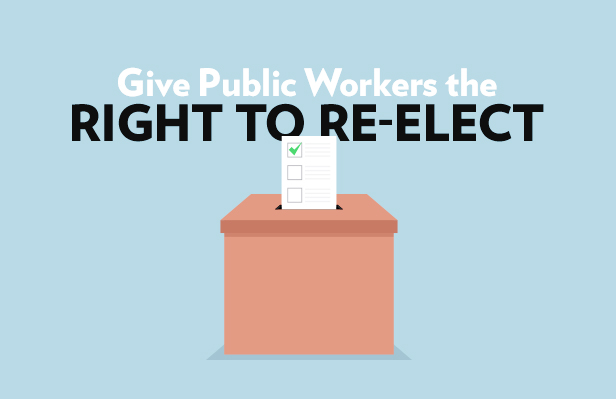Fact Sheet

The Undemocratic Nature of Government Unions
The Pennsylvania Public Employee Relations Act (PERA) entrenches compulsory unionism among public sector workers. It stacks the deck in favor of powerful union executives, limiting state workers and teachers from having a voice in their current union, seeking new union representation, or leaving their union.
Union Election Requirements
- Once the Pennsylvania Labor Relations Board certifies a union as the exclusive representative of a collective bargaining unit—a grant of monopoly bargaining power—workers are rarely afforded another chance to vote. To remove a union, employees must file a petition for decertification, which requires 30 percent support of the bargaining unit. Only then can employees cast votes to break ties from their union. Otherwise, the union retains its monopoly—barring another decertification effort, which could take years to materialize.
- The petition for decertification can only be filed within a 30-day window, at the end of a union contract.
The Consequences of an Undemocratic Process
- The process required to revoke a union’s exclusive representation privilege has created a permanent union class that does not represent current employees.
- An overwhelming percentage of teachers have never voted for their union. Pennsylvania Department of Education data (from the 2013-2014 school year) reveals more than 99 percent of classroom teachers accepted a job after their union’s last election.
- Roughly three-quarters of school districts do not employ a single teacher who could have voted in a union certification election.
- Of the 20 Pennsylvania school districts (see chart below) with the largest teacher workforce, only 8 employ at least 1 teacher who could have voted for their union.
- At the state level, trends are similar. Of five state unions analyzed—UFCW 1776, AFSCME 13, PSCOA, SEIU 668, and ISSU—only the corrections officers’ union (PSCOA) includes a significant portion of members (33 percent) who were eligible to vote in their union’s certification election back in 2001.
- Of state workers in the other four unions, more than 99 percent (in each union) were hired after their union’s last certification election.
|
Largest Pennsylvania School Districts by Teacher Workforce |
|||
|
School district |
Total no. of teachers |
Current teachers employed at election date |
Percent of current teachers employed at election date |
|
Philadelphia |
8,086 |
0 |
0% |
|
Pittsburgh |
1,868 |
2 |
0.11% |
|
Central Bucks |
1,157 |
1 |
0.09% |
|
Allentown City |
961 |
0 |
0% |
|
Reading |
952 |
0 |
0% |
|
Bethlehem Area |
894 |
2 |
0.22% |
|
North Penn |
838 |
0 |
0% |
|
Downingtown Area |
815 |
1 |
0.12% |
|
West Chester |
801 |
1 |
0.12% |
|
Erie City |
780 |
0 |
0% |
|
Council Rock |
779 |
0 |
0% |
|
Lancaster |
774 |
0 |
0% |
|
Upper Darby |
774 |
0 |
0% |
|
Pennsbury |
750 |
4 |
0.53% |
|
Central Dauphin |
732 |
0 |
0% |
|
Pocono Mountain |
694 |
0 |
0% |
|
Scranton |
685 |
5 |
0.73% |
|
Lower Merion |
634 |
0 |
0% |
|
Hazleton Area |
632 |
1 |
0.16% |
|
North Allegheny |
552 |
0 |
0% |
|
Totals |
24,158 |
17 |
0.07% |
|
Sources: Pennsylvania Labor Relations Board, school districts and Pennsylvania Department of Education |
|||
Recommendations
- Right to Re-Elect: The decertification process is cumbersome and undemocratic. A better option for public employees is mandatory recertification every four years. This reform guarantees employees a vote on their union—either for re-election, a new union, or to represent themselves—giving them a greater voice in their workplace.
- Local-Only Union: Periodic elections should include a local-only union option, which would give public employees more control over the direction of their union, instead of being forced to finance the political agendas of state and national unions.
# # #
For more information on Union Democracy, visit CommonwealthFoundation.org.